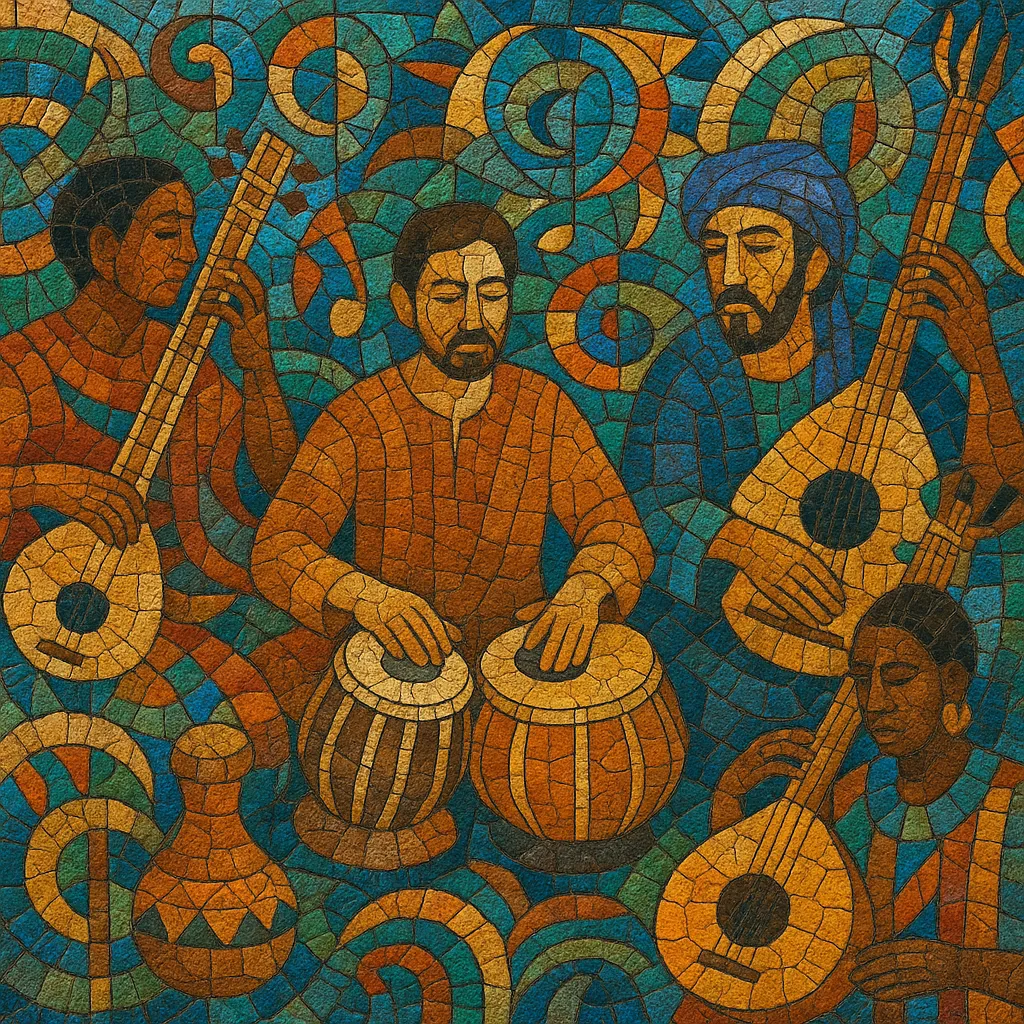World fusion is a cross-cultural approach that blends traditional or indigenous musical practices with contemporary forms such as jazz, rock, electronic, and pop.
Rather than a single codified style, it is a process-driven genre where artists combine instruments, rhythms, scales, and production techniques from different regions to create new hybrids. Typical combinations include Indian raga and tala with jazz harmony, West African polyrhythms with rock or electronic grooves, Middle Eastern maqam with ambient textures, and Latin and Caribbean percussion in pop or hip hop frameworks.
Because the genre emphasizes collaboration and exchange, it often highlights acoustic timbres (e.g., kora, oud, sitar, duduk, shakuhachi, ngoni, tabla) alongside electric or digital tools (synths, samplers, drum machines), resulting in music that can be both traditional in spirit and modern in sound.
Early world fusion grew out of the post‑1960s experimental climate, particularly in jazz and progressive rock. Improvisers and composers began engaging deeply with non‑Western musical systems, not merely borrowing timbres. Groups and projects such as Shakti (John McLaughlin with Indian classical musicians), Oregon, and Don Cherry’s global jazz explorations set precedents by integrating raga, tala, African polyrhythms, and modal improvisation into jazz-fusion frameworks.
In the mid‑1980s, industry and media interest coalesced under the “world music” marketing umbrella, which helped world fusion reach a broad audience. Landmark releases like Paul Simon’s Graceland (1986) and Peter Gabriel’s Passion (1989) showcased collaborative, cross‑regional production. Labels such as Real World (UK) and Luaka Bop championed transnational projects. The 1990s saw an electronic turn: Deep Forest and Afro Celt Sound System merged sampled and live traditional elements with ambient, dance, and pop aesthetics. Simultaneously, the Asian Underground (e.g., Talvin Singh, Nitin Sawhney) blended South Asian classical/folk traditions with jungle, trip hop, and electronica, further expanding the idiom.
With global connectivity and affordable production tools, world fusion diversified across scenes and diasporas, from Afro-diasporic fusions in Europe and the Americas to new hybrids involving Middle Eastern maqam, Central/West African rhythms, and East/Southeast Asian traditions. Contemporary projects often emphasize equitable collaboration, cultural crediting, and fieldwork-informed practice. Streaming platforms and remote production have enabled cross-continental ensembles, while live shows increasingly foreground authentic traditional performance alongside modern electronics.
World fusion remains less a fixed recipe than a dialogic method—one that values respectful partnership, rhythmic and modal fluency, and imaginative production to bridge distinct musical worlds.


